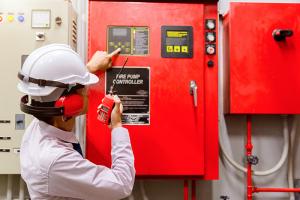ASHRAE guidelines and standards open for comment
The below draft is open for a 45-day public review
ASHRAE/ASHE Addendum y to ANSI/ASHRAE/ASHE Standard 170-2021, Ventilation of Health Care Facilities (first public review draft). Public review closes Sept. 1.
This proposed addendum follows up on action earlier this year when the committee addressed research supporting changes stemming from ASHRAE .CO-RP-03 Academic Research to Support Facilities Guidelines Institute & ANSI/ASHRAE/ASHE Standard 170 published in 2019. This research determined that the definitive value of 20 ACH for operating rooms was not scientifically justified, but could also not be rejected either. A group of clinicians, engineers, researchers, and facilities managers has since implemented a future work research task from CO-RP-03 that focused on collecting operating test and balance data and compared those against published SSI rates for the corresponding hospital. The research team collected test and balance data from 45 hospitals that contain 521 operating rooms from three geographically diverse health systems with the key results determining that increased ventilation does not lead to reduced SSI and leads to a marginal increase in SSI rates. Accordingly, SSPC 170 reviewed the research and recommends that prior to performing operational adjustments to Operating Room space ventilation, a risk assessment should be completed and have added a footnote to Tables 7-1 and 8-1 as noted below.
The below draft is open for a 30-day public review
ASHRAE/ASHE Addendum x to ANSI/ASHRAE/ASHE Standard 170-2021, Ventilation of Health Care Facilities (first public review draft). Public review closes Sept. 7.
Proposed Addendum x adds a requirement that if a design for emergency conditions includes a plan for infectious aerosols, then it must follow ASHRAE Standard 241, Control of Infectious Aerosols.




